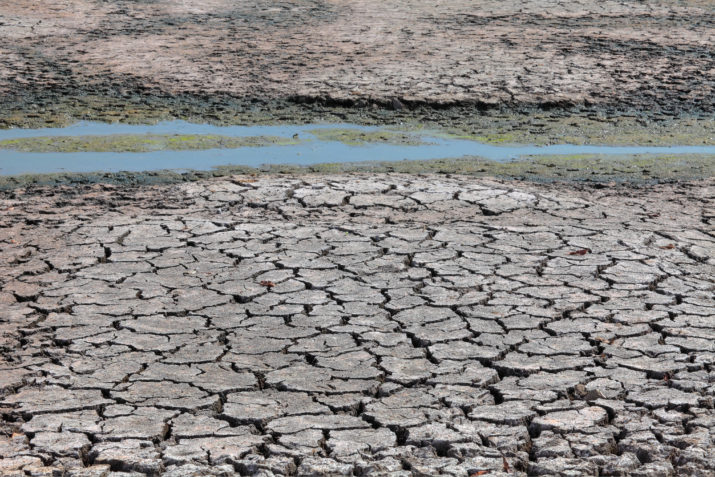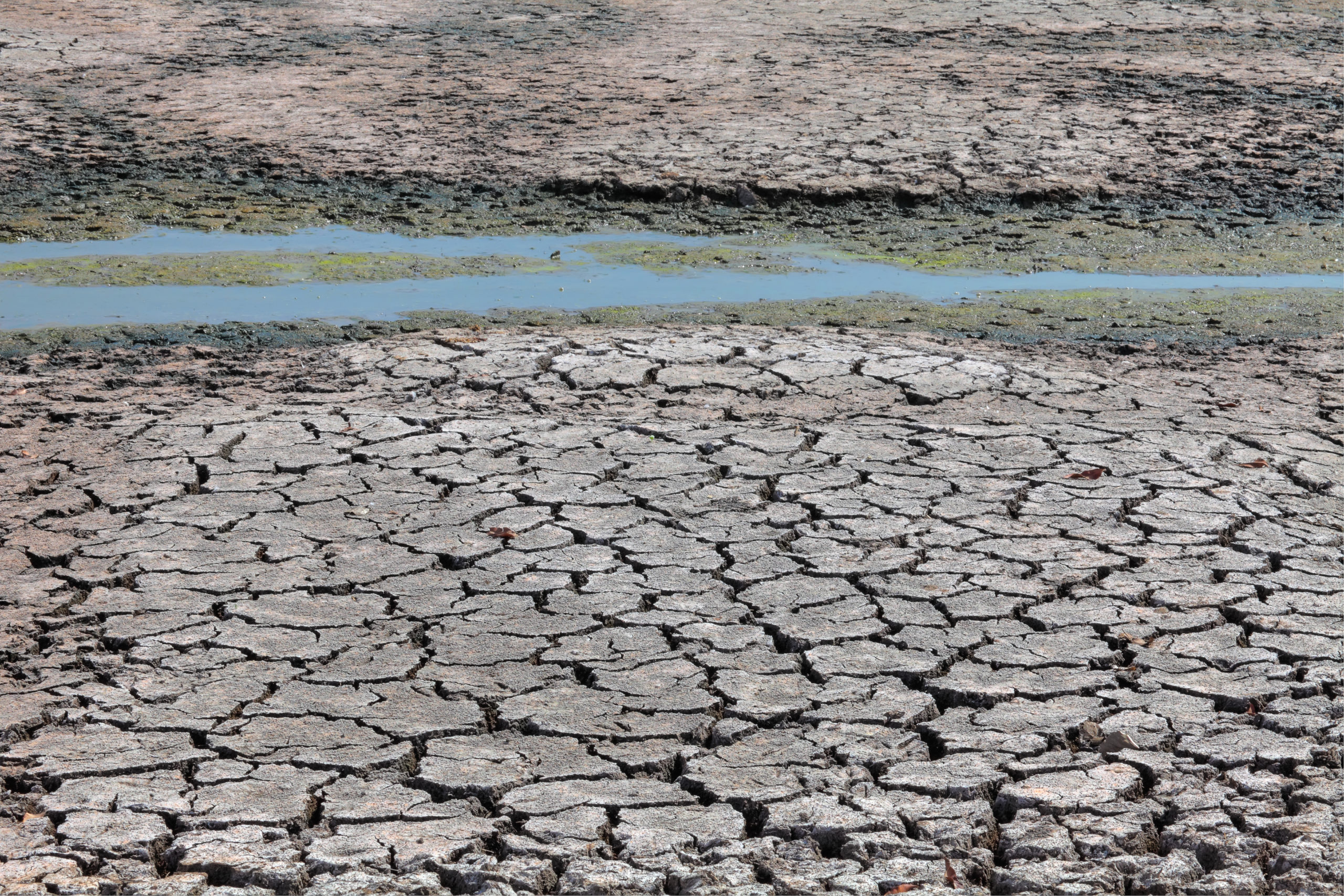

The number of forcibly displaced people has been steadily on the rise. In 2015, over one million refugees and migrants reached Europe, the largest fraction of whom were fleeing the civil war in Syria. In public and academic debates, it has been widely discussed to what extent climate change plays a role in these dynamics and how. The ongoing crisis in Afghanistan has also drawn attention to the question of how climatic conditions contribute to political unrest and civil wars, and what this ultimately means for international security.
Recent geopolitical developments, such as the ongoing conflict in Syria, have displaced significant parts of the population and prompted large cross-border refugee flows toward Europe. In this context, the public is often concerned about the contributing role of climate change and the increasingly more severe and frequent extreme weather events such as droughts, floods, and heatwaves. Former President of the US Barack Obama stated that in the context of the changing climate “drought and crop failures and high food prices helped fuel the early unrest in Syria” (Obama 2015). Similarly, former US Secretary of State, John Kerry, said that “it’s not a coincidence that immediately prior to the civil war in Syria, the country experienced its worst drought on record.” (Kerry 2015). The current crisis in Afghanistan has further drawn attention from both the public and the media to the question of how climatic conditions can contribute to political unrest and civil war (NYT 2021).
These concerns have resulted in a surge of scientific efforts to debunk and prove the climate-conflict association. And indeed, the resulting picture has provided support for the looming concerns that climate change acts as a security threat multiplier (Detges et. al 2020). As for the Syria example, back-to-back droughts of unprecedented scale before the uprising have been shown to have aggravated existing water and agricultural insecurity, and have led to far-reaching agricultural failures and livestock mortality. As a consequence, as many as 1.5 million people migrated from rural farming areas to cities’ peripheries and exacerbated preexisting vulnerabilities that have essentially triggered the unrest, including unemployment and inequality, (Abel et al. 2019; Ash and Oradovich 2020; Kelley et al. 2015). In turn, over 1 million people have fled the conflict in Syria searching safety in Europe.
Simplistic narratives of climate migration are dangerous
Along these lines, climate migration has often been framed as a looming international security crisis (Baldwin et al. 2014, p. 125), with predictions of international flows of millions of “climate refugees” (Myers 2002). This stigma of the securitization narrative has been used in discussions of security implications of climate change, providing fertile land for anti-immigration sentiments, and even led to the implementation of anti-immigration policies (Boas et al. 2019). For example, one could argue that EU migration policies primarily aim to protect its borders, reduce migration, and keep potential migrants in their places (Trombetta 2014) without providing sufficient means of entering. Moreover, the US Department of Defense perceives climate change related intra- and interstate migration to be responsible for adverse human security consequences in destination countries (US Department of Defense 2015). However, how, if at all, weather and climate-related events impact conflict and trigger displacement/migration as a consequence is context-dependent (Detges et. al 2020). Weather and climate are but one of the many factors that shape mobility (used interchangeably with migration), and this effect is indirect rather than direct. Therefore, simplistic narratives on the climate-conflict-migration discourse can easily result in misguided conclusions, not corresponding to reality of climate migration (Bettini 2017;Thalheimer et al., 2021).
Disentangling the climate-migration association
While higher order effects of climate change may trigger some international displacement—as the Syrian example demonstrates—most climate migrants move to towns and cities in their home countries and not to foreign shores (Šedová et al. 2021). Climate migration often serves as an important risk management strategy for adversely affected populations.
However, the relationship between climate-related events and migration remains complex. Usually, many reasons, drivers, and factors lead to a decision whether to move or to stay. In this context, the migration-development literature provides a more nuanced understanding of human mobility (Klepp 2017) and clarifies the often-misunderstood debate on migration and development: because migration requires financial capital, poverty reduces out-migration; and in turn, economic development and increased financial means lead to more migration (Bastia and Skeldon 2020). Even in East Africa, an alleged hot-spot of climate change, short-distance migration has traditionally been integral to people’s livelihoods, and more recently, a means to cope with weather and climate-related events (Thalheimer et al. 2021).
Conflict adds yet another layer of complexity to the relationship. Especially poor communities affected by drought, water-stress, political instability and growing conflicts, could find themselves forced to move as a response to climate thresholds. In some cases, a warming of + 1.5 °C and more already significantly increases the risk of inter-group conflicts, which in turn can generate reinforced involuntary mobility (Hsiang et al. 2013). Similarly, in geographies affected by war and conflict, the political economy plays a crucial role in sustained conflict situations. Somalia is a traditionally mobile country with most of its population being pastoralists. However, it is also a country affected by recurring extreme weather, protracted armed conflict, political instability and displacement, where local populations are “used” to compounding vulnerabilities, and need to operate under a war economy (Thalheimer et al. 2021). Somalis rely heavily on remittances from neighboring countries in East Africa or internationally, such as the United States; a recent book highlights the richness of refugees contributing to the economies in host communities (Betts 2020).
Whether climate-related migration triggers cascading risks, depends on how it is managed
In a warming world, the amount of people who will be forced to move due to direct or higher order climatic impacts is projected to increase. Can this make it more likely that climate change will spur future conflicts and cascades of displacement?
Depending on how it is managed, climate-related human mobility can have positive outcomes for all migrants as well as the sending and host communities. Out-migrating from affected areas and the use of remittances are seen as essential risk management and survival strategies (Black et al. 2011; McLeman and Smit 2006), as demonstrated by the Somalia example. This implies that climate migration, in fact, may contribute to the reduction of vulnerabilities (Wiegel et al. 2019). At the destination, population growth, whether it is a consequence of migrants’ inflows due to degrading climatic conditions, conflicts, or both, pressures governments to provide basic services, jobs and housing. If migration is planned and cities are well prepared, increased urbanization can offer economic opportunities. If poorly managed, migration can have devastating consequences for the well-being of migrants, host populations, and the ones at the origin, reliant on remittances. These can translate into violence and conflicts over limited resources (Koubi 2019) and even trigger migration cascades threatening international peace and security (Abel et al. 2019; Ash and Obradovich 2020). Given these cascading effects, the overall impact of climate change on migration can be much larger than current estimates suggest. In fact, refugee flows to the Europe Union are expected to increase possibly in a non-linear manner as a result of the warming planet (Missirian and Schlenker 2017).
What Europe can do to prevent climate migration from becoming a crisis
To prevent climate migration from becoming a security crisis with potentially major consequences for Europe, the decision makers should act on two fronts: i) mitigation, and ii) adaptation. All governments need to commit to meeting the Paris Agreement targets, for instance, via implementing sufficiently high and socially just carbon pricing, to mitigate climate change (Kalkuhl et al. 2021). Simultaneously, to advance peace and mitigate crises, environmental peacebuilding efforts should be supported, especially in the most fragile regions. It is essential to strengthen climate change adaptation, which would increase the resilience of vulnerable communities given that the degrading climatic conditions are to some extent unavoidable. Here, decision makers need to acknowledge that in addition to in-situ adaptation measures such as climate-smart agriculture as well as access to irrigation, insurance and financial services; well managed migration with focus on urban resilience serves as an efficient alternative. To achieve all of the above, Europe needs to strengthen development cooperation and invest in climate finance. This is especially relevant in dryland regions that are projected to be most affected by climate change impacts (Thalheimer et al. 2021b). All decisions should ideally be backed by scientific evidence.
However, in a changing climate an inflow of migrants to Europe is to some extent inevitable and should be even desirable given the demographic challenges such aging population. Policy makers should anticipate this impending inflow by providing ample legal avenues for entering European Union. In this context, integration policies become even more crucial. If they are designed in the right way, they will be beneficial for all, enabling this aging continent to harness the potential of these young migrants arriving at its shores.
Barbora Šedová leads the FutureLab – Security, Ethnic Conflicts and Migration at the Potsdam Institute for Climate Impact Research (PIK) and the Weathering Risk initiative. Barbora is also a Fellow at the Mercator Research Institute on Global Commons and Climate Change (MCC) in Berlin.
Lisa Thalheimer is a Postdoctoral Research Associate with the Center for Policy Research on Energy and the Environment (C-PREE) at Princeton University. Lisa is also an Associate at Climate Econometrics, a project and network based at the University of Oxford.
References
Abel, Guy J., Michael Brottrager, Jesus Crespo Cuaresma, And Raya Muttarak. “Climate, Conflict and Forced Migration.” Global Environmental Change 54 (2019): 239-249.
Ash, Konstantin, And Nick Obradovich. “Climatic Stress, Internal Migration, and Syrian Civil War Onset.” Journal of Conflict Resolution 64, No. 1 (2020): 3-31.
Baldwin, Andrew, Chris Methmann, And Delf Rothe. “Securitizing ‘Climate Refugees’: The Futurology of Climate-Induced Migration.” Critical Studies on Security 2, No. 2 (2014): 121-130.
Bastia, Tanja, And Ronald Skeldon, Eds. Routledge Handbook of Migration and Development. Routledge, 2020.
Bettini, Giovanni. “Where Next? Climate Change, Migration, and the (Bio) Politics of Adaptation.” Global Policy 8 (2017): 33-39.
Betts, Alexander. The Wealth of Refugees: How Displaced People Can Build Economies. Oxford University Press, 2021.
Black, Richard, Stephen RG Bennett, Sandy M. Thomas, And John R. Beddington. “Migration as Adaptation.” Nature478, No. 7370 (2011): 447-449.
Boas, Ingrid, Carol Farbotko, Helen Adams, Harald Sterly, Simon Bush, Kees Van Der Geest, Hanne Wiegel Et Al. “Climate Migration Myths.” Nature Climate Change 9, No. 12 (2019): 901-903.
Detges, Adrien, Daniel Klingenfeld, Christian König, Benjamin Pohl, Lukas Rüttinger, Jacob Schewe, Barbora Sedova, And Janani Vivekananda. “10 Insights on Climate Impacts and Peace.” (2020). Technical Report.
Hsiang, Solomon M., Marshall Burke, And Edward Miguel. “Quantifying the Influence of Climate on Human Conflict.” Science 341, No. 6151 (2013).
Kalkuhl, Matthias, Brigitte Knopf, And Ottmar Edenhofer. “CO2-Bepreisung: Mehr Klimaschutz Mit Mehr Gerechtigkeit.” (2021). MCC Working Paper.
Kelley, Colin P., Shahrzad Mohtadi, Mark A. Cane, Richard Seager, And Yochanan Kushnir. “Climate Change in the Fertile Crescent and Implications of the Recent Syrian Drought.” Proceedings of The National Academy of Sciences 112, No. 11 (2015): 3241-3246.
Kerry, John. 2015. “Remarks on Climate Change and National Security.” Accessed January 28, 2022. https://2009-2017.state.gov/secretary/remarks/2015/11/249393.htm.
Klepp, Silja. “Climate Change and Migration.” In Oxford Research Encyclopedia of Climate Science. 2017.
Koubi, Vally. “Climate Change and Conflict.” Annual Review of Political Science 22 (2019): 343-360.
Mcleman, Robert, And Barry Smit. “Migration as an Adaptation to Climate Change.” Climatic Change 76, No. 1 (2006): 31-53.
Myers, Norman. “Environmental Refugees: A Growing Phenomenon of the 21st Century.” Philosophical Transactions of The Royal Society of London. Series B: Biological Sciences 357, No. 1420 (2002): 609-613.
NYT. 2021. “Biden Could Still Be Proved Right in Afghanistan.” Accessed January 28, 2022. www.Nytimes.Com/2021/08/16/Opinion/Afghanistan-Biden-Taliban.Html
Obama, Barack. 2015. “Remarks by The President at The United States Coast Guard Academy Commencement.”Accessed January 28, 2022. https://Obamawhitehouse.Archives.Gov/The-Press-Office/2015/05/20/Remarks-President-United-States-Coast-Guard-Academy-Commencement.
Thalheimer, Lisa, Friederike Otto, And Simon Abele. “Deciphering Impacts and Human Responses to a Changing Climate in East Africa.” Frontiers in Climate (2021): 84.
Thalheimer, Lisa, Et Al. “Advancing the Evidence Base of Future Warming Impacts on Human Mobility in African Drylands.” Earth’s Future 9.10 (2021b): E2020ef001958.
Trombetta, Maria Julia. “Linking Climate-Induced Migration and Security Within The EU: Insights from The Securitization Debate.” Critical Studies on Security 2, No. 2 (2014): 131-147.
Šedová, Barbora, Lucia Čizmaziová, And Athene Cook. “A Meta-Analysis of Climate Migration Literature.” (2021). Working Paper No. 29. Center for Economic Policy Analysis.
US Department of Defense. “National Security Implications of Climate-Related RisksAnd A Changing Climate.” (2015). Refid 8–6475571.
Wiegel, Hanne, Ingrid Boas, And Jeroen Warner. “A Mobilities Perspective on Migration in The Context of Environmental Change.” Wiley Interdisciplinary Reviews: Climate Change 10, No. 6 (2019): E610.
Published on February 1, 2022.




